24 Clever customer satisfaction surveys from big brands
Last updated
4 March 2023
Reviewed by
Customer satisfaction surveys are a great way to stay plugged into your customers’ needs, wants, and experiences. Whether you are a small local business or a multinational corporation, customer satisfaction is always king—so there is no excuse not to be conducting customer satisfaction surveys as part of your company’s growth strategy.
Free template to analyze your survey results
Analyze your survey results in a way that's easy to digest for your clients, colleagues or users.
Use template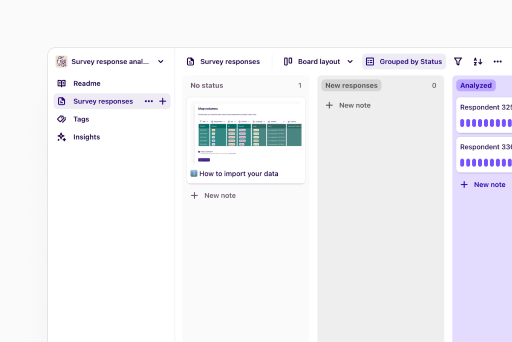
What are customer satisfaction surveys?
Customer satisfaction (CSAT) surveys are research tools used to learn more about a customer’s satisfaction level when engaging with your product or service. Depending on the type of data you want, different customer satisfaction survey designs offer particular benefits to your business.
Why use customer satisfaction surveys?
Some of the key reasons to use customer satisfaction surveys are:
Preventing customer drop-off: If your customers are dissatisfied with your product or service, they will abandon your brand. Learning more about their experience can help you make the necessary changes to better serve your loyal customers.
Helping you target your desired audience: Gaining insights into the demographics and preferences of your customers helps your business to home in on your specific niche and target audience.
Increasing customer retention and repurchasing: Happy customers are more likely to return to your business. Improving your company based on their direct feedback can boost sales and engagement.
Improving your customers’ user journey: Customer satisfaction begins when they first become aware of your brand, not after making a purchase. Collecting data about their experience can help you best serve your customers at every step of brand engagement.
Types of customer satisfaction surveys
For your customer satisfaction survey to provide the most benefit for your business, you need to ask the right questions. Here are a few examples of types of surveys (with questions) that you may want to include in your CSAT survey:
Product usage
Product usage surveys are the core components of CSATs. These surveys ask your customers directly about their experience purchasing and using your product or service. This is valuable information that can help you improve your offerings and increase customer retention.
Example product usage questions:
How often do you use the product/service?
What product features are the most beneficial for you?
If you could change anything about the current product/service, what would it be?
Satisfaction scale
Simple feedback can be incredibly impactful. For example, asking customers to rate their experience on a number scale can provide valuable insight into how your product or service is doing.
Example satisfaction scale questions:
On a scale of 1–10, how satisfied are you with your online purchasing experience?
How likely are you to recommend our products?
Rate your satisfaction with our in-store staff today.
Demographic
Learning about your customer’s basic demographics (not in a creepy way, we promise) is essential for tailoring your product or service to your target audience. Having a better understanding of who is using your brand is necessary for any successful business.
Example demographics questions:
What country do you live in?
What is your age range?
What industry do you work in?
Psychographic
Psychographic surveys dig deeper than surface-level questions to learn more about the motivations behind your customers’ purchases. The goal of this type of research is to get a better understanding of your customers’ behavior, values, and preferences.
Example psychographic questions:
How many hours a day do you spend using the product/service?
What is the biggest challenge when using the product/service?
How do you feel about [insert product type]?
Longevity
Often added at the end of a CSAT, questions about longevity are essential for building a long-term relationship with your customers. When done correctly, this style of question can help you gauge the success of product or service changes you make over time.
Example longevity questions:
Are you willing to take other surveys from our company in the future?
May we contact you to follow up on your responses to this survey?
Are you interested in talking to a customer service representative for more support?
Open-text
Instead of using scales or pre-determined answers, open-text surveys allow the participant to write out their thoughts freely. Whenever possible, including at least one open-text question in your survey can help collect more specific information about your customer’s experience.
Example open-text questions:
Describe your most recent online shopping experience.
How can our employees serve your needs better?
Do you have any feedback that you would like to share with our team?
What should a customer satisfaction survey include?
When it’s time to put together your customer satisfaction survey, there are a few essential components:
Clear company branding: You want your participants to know exactly which company they are sharing their feedback with. Using your company logo, colors, and design helps make the survey more identifiable to your brand.
Easy-to-follow questions: The questions you ask as part of the CSAT are essential. Make sure the questions are easy to read, simple to fill out, and do not leave your customers confused or irritated.
Appreciation for participation: At the end of the survey, adding an extra thank-you is a must for building brand trust. Your customer took time out of their day to provide you with information, so be sure to show how much you appreciate this!
Looking for some extra inspiration when creating your customer satisfaction survey? Check out our list of 24 high-quality CSATs from successful, well-known companies.
24 customer satisfaction surveys from big brands
#1 – Slack
Slack is an instant messaging software used by businesses worldwide. Their target audience is young working professionals.
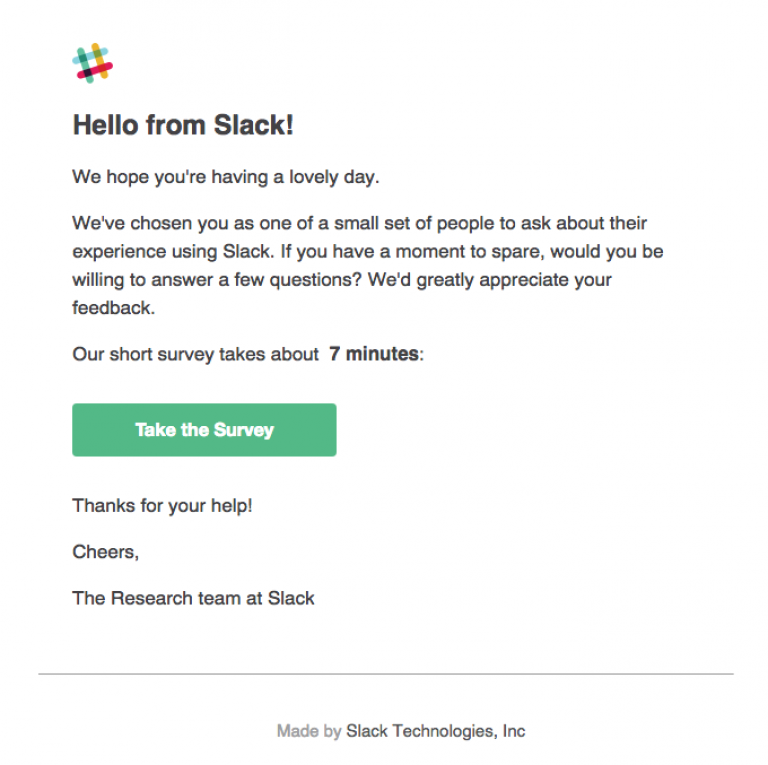
What we like
Slack shares how long the survey will take to complete, which shows respect for their participants’ time.
The button to fill out the survey is clear and hard to miss, which will help drive engagement.
#2 – Amazon
Amazon is a multibillion-dollar eCommerce giant that provides fast delivery of products directly to your door. Their target audience broadly encompasses all online shoppers.

What we like
Instead of a number system, Amazon uses expressive words like “terrible” and “great” as their satisfaction scale qualifiers.
Amazon finishes its survey with an open-text invite for additional comments to gain extra info about their customers’ experience.
#3 – Apple
Apple is one of the largest tech companies in the world. They serve working professionals and casual technology users.

What we like
Apple’s survey is located in the Apple Store app, which is only accessible on Apple devices. This ensures that they only hear from their target audience.
This survey can be filled out at any time (not just after purchase), which helps to get a broader range of customer experience testimonials.
#4 – LuluLemon
LuluLemon is a well-known sports and activewear brand. Their target audience includes male and female fitness enthusiasts.
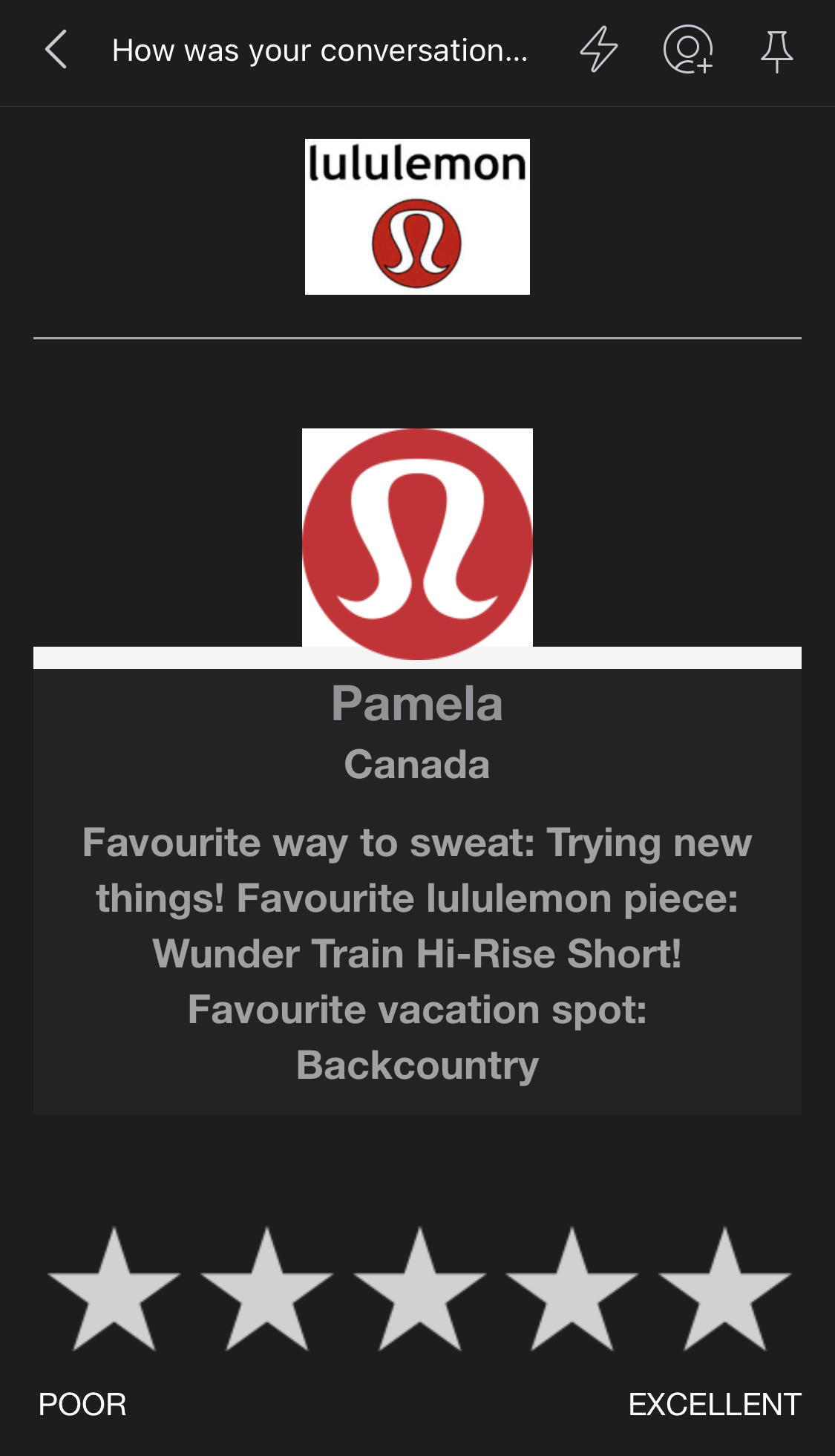
What we like
The star rating system is clear, easy to see, and effective for collecting information.
Adding the customer service staff member’s name and favorite LuluLemon products to the email adds a “human” and relatable feel, which aligns with their branding.
#5 – Kroger
Kroger is the parent business of many American grocery chains across the country. Their target audiences are families and consumers who shop at their grocery stores.
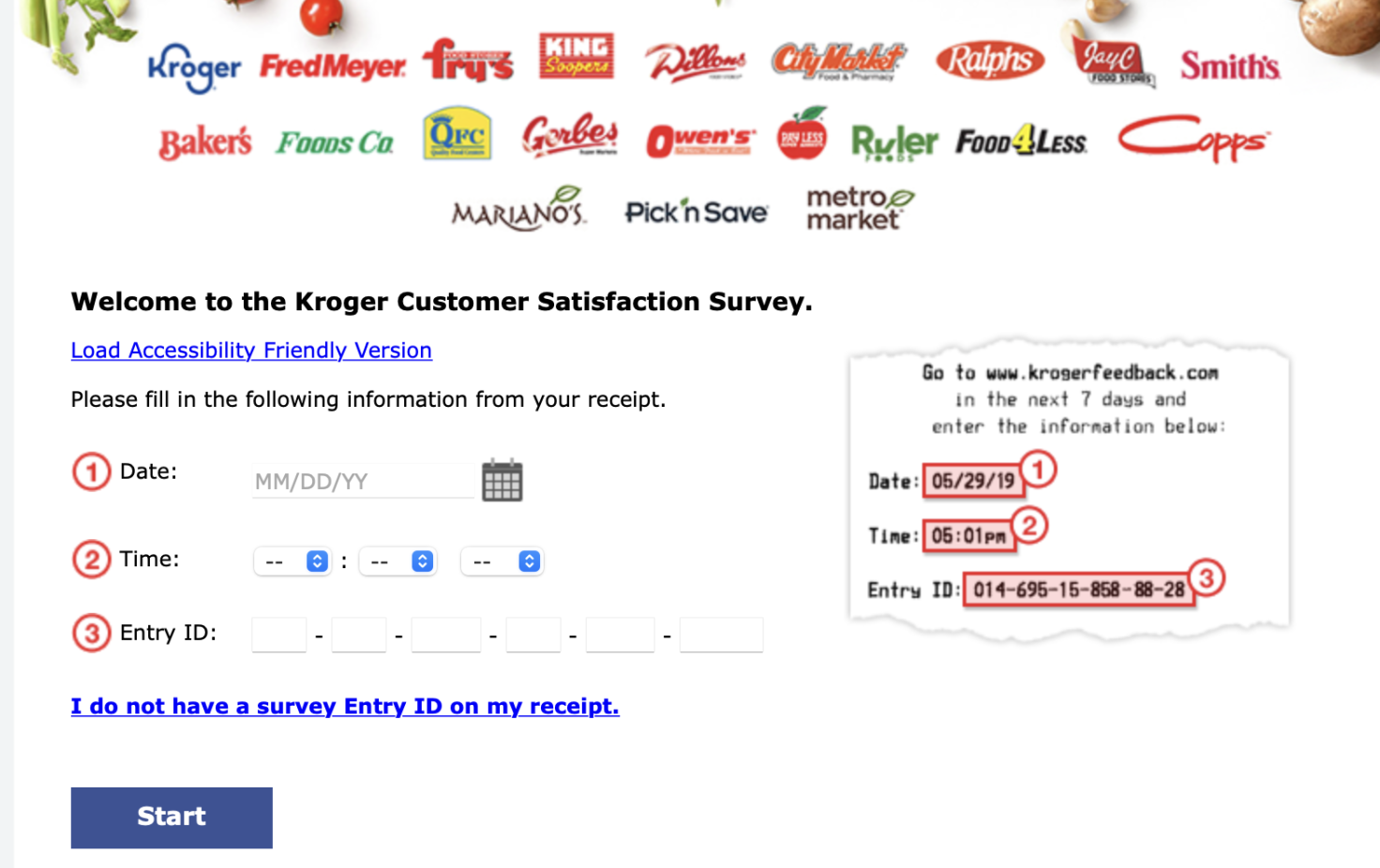
What we like
The invitation to fill out the survey is on a purchase receipt, which ensures only active users fill out the survey.
Kroger also includes an accessibility-friendly option for their survey, which is great for improving reach.
#6 – Walmart
Walmart is a multibillion-dollar international company that sells consumer goods. Their target audience is shoppers looking for low-cost products.
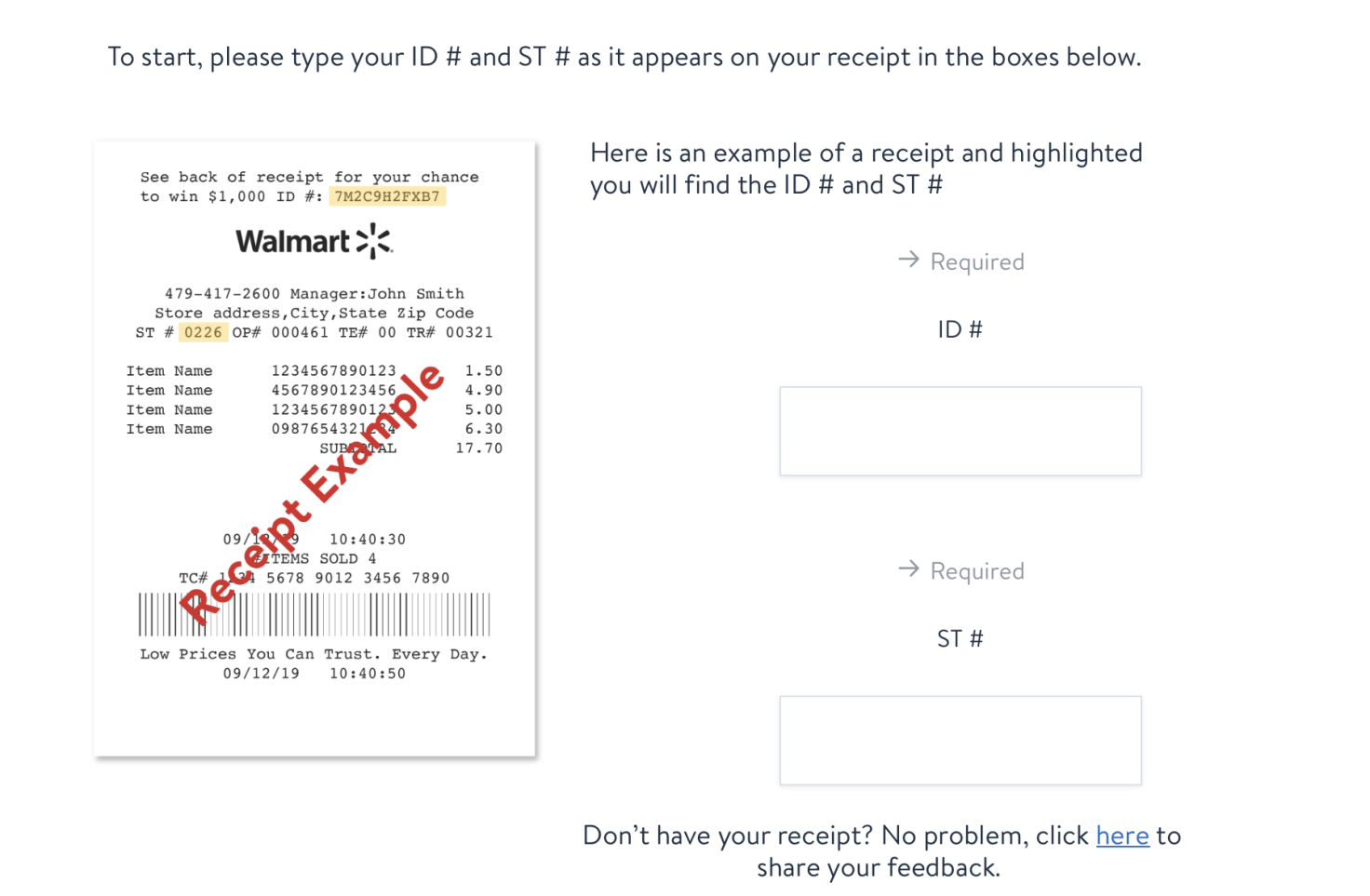
What we like
The survey includes easy-to-follow examples to guide customers who are providing feedback.
Walmart can also use the demographic info about where the customer shopped to learn more about their target audience.
#7 – Airbnb
Airbnb is an online accommodation rental company. Their target audience is travelers looking for a good deal on places to stay.
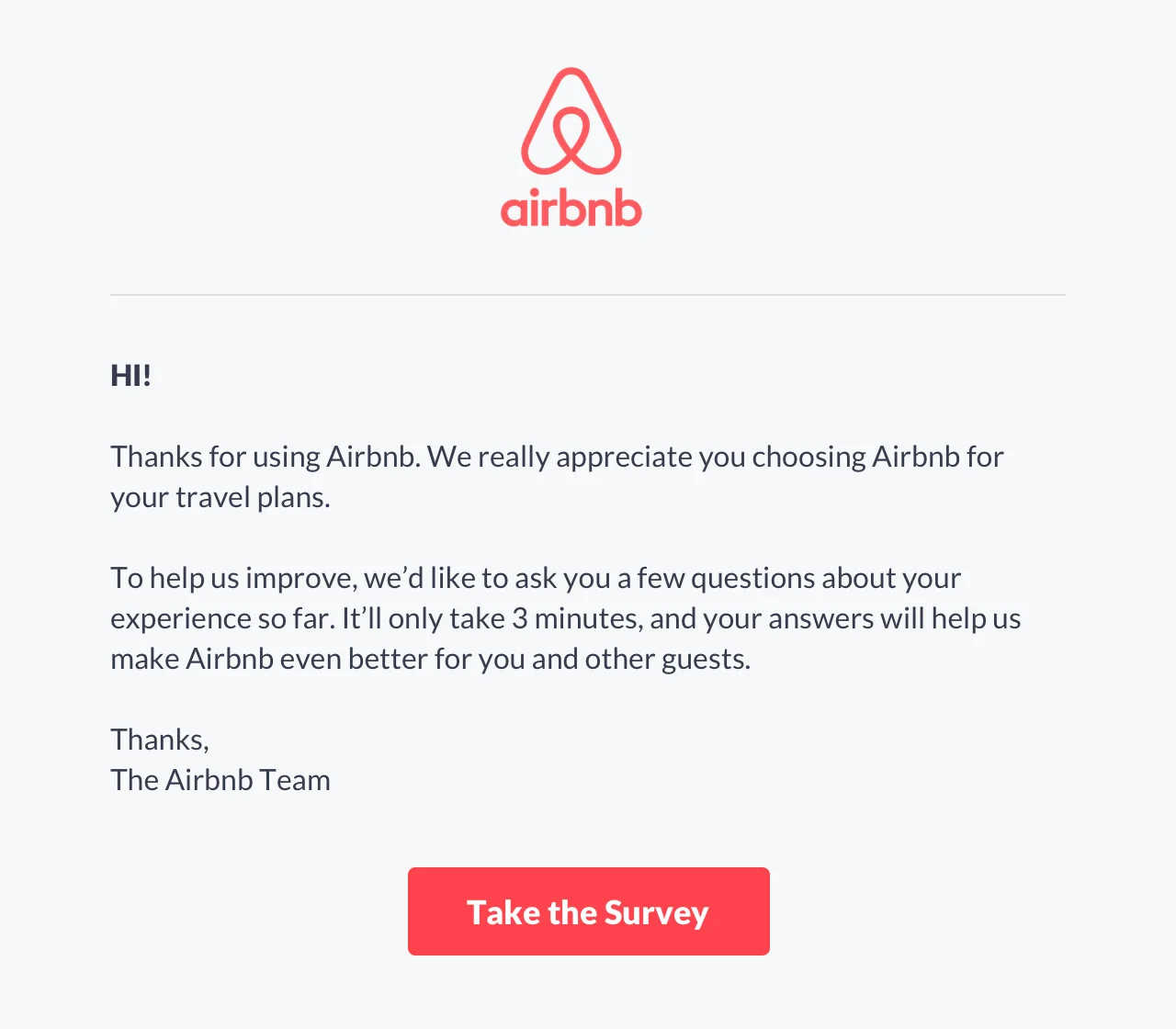
What we like
Using email invites for the survey, they can ensure that only people who use their service are contacted.
Using the company colors for the survey button creates a strong and clear CTA which helps with click-through rates.
#8 – McDonald’s
McDonald’s is the most well-known global fast-food company. Their target users are people looking for convenient American-style fast food.
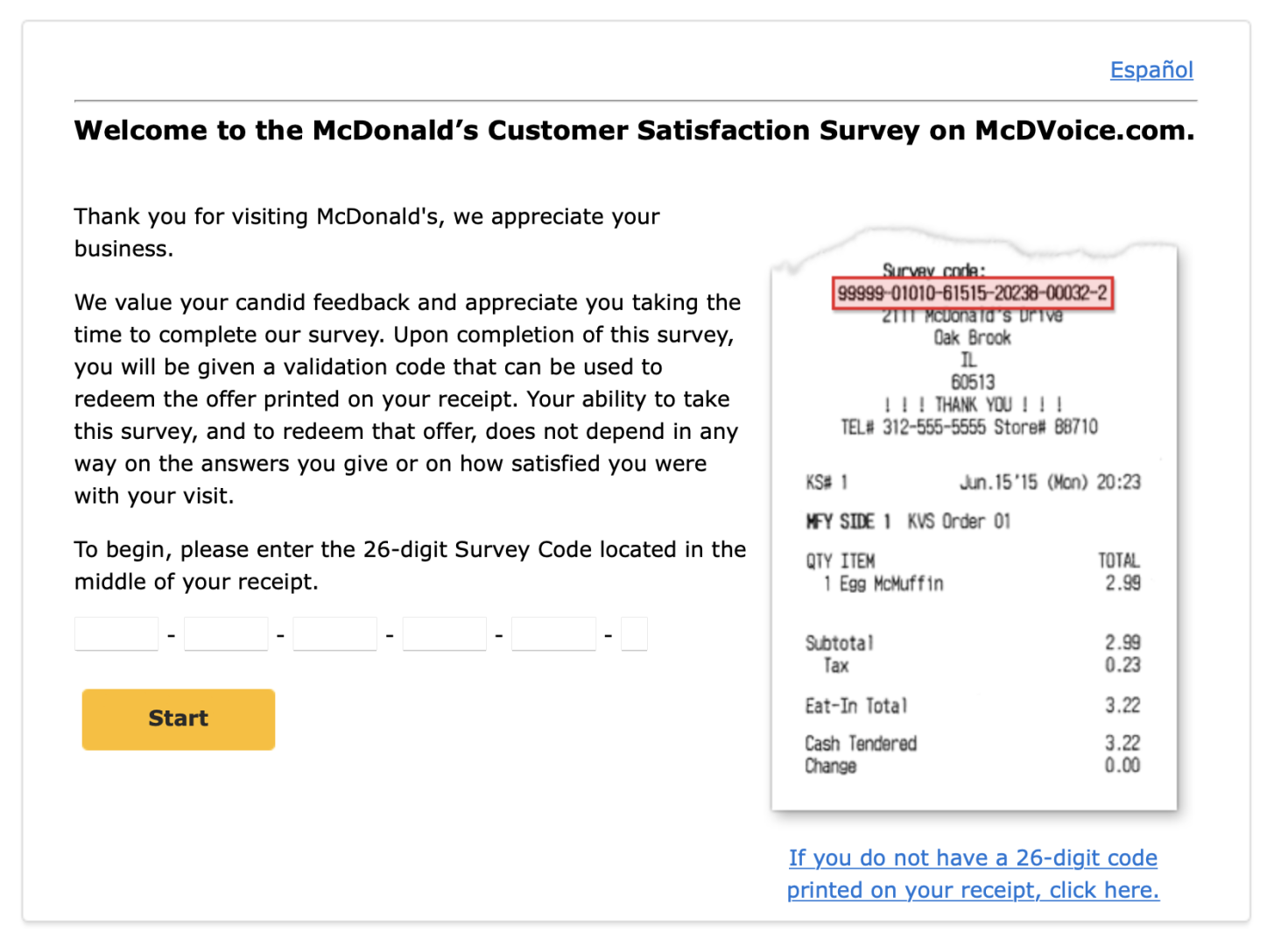
What we like
McDonald’s uses a feedback campaign (McDVoice) to raise awareness of their survey.
By completing the survey, participants get access to exclusive deals and coupons, which improves completion rates and rewards those who invest in their brand.
#9 – IKEA
IKEA is a build-it-yourself Swedish furniture and home-goods brand. They primarily target young people looking to furnish their homes or college dorms.
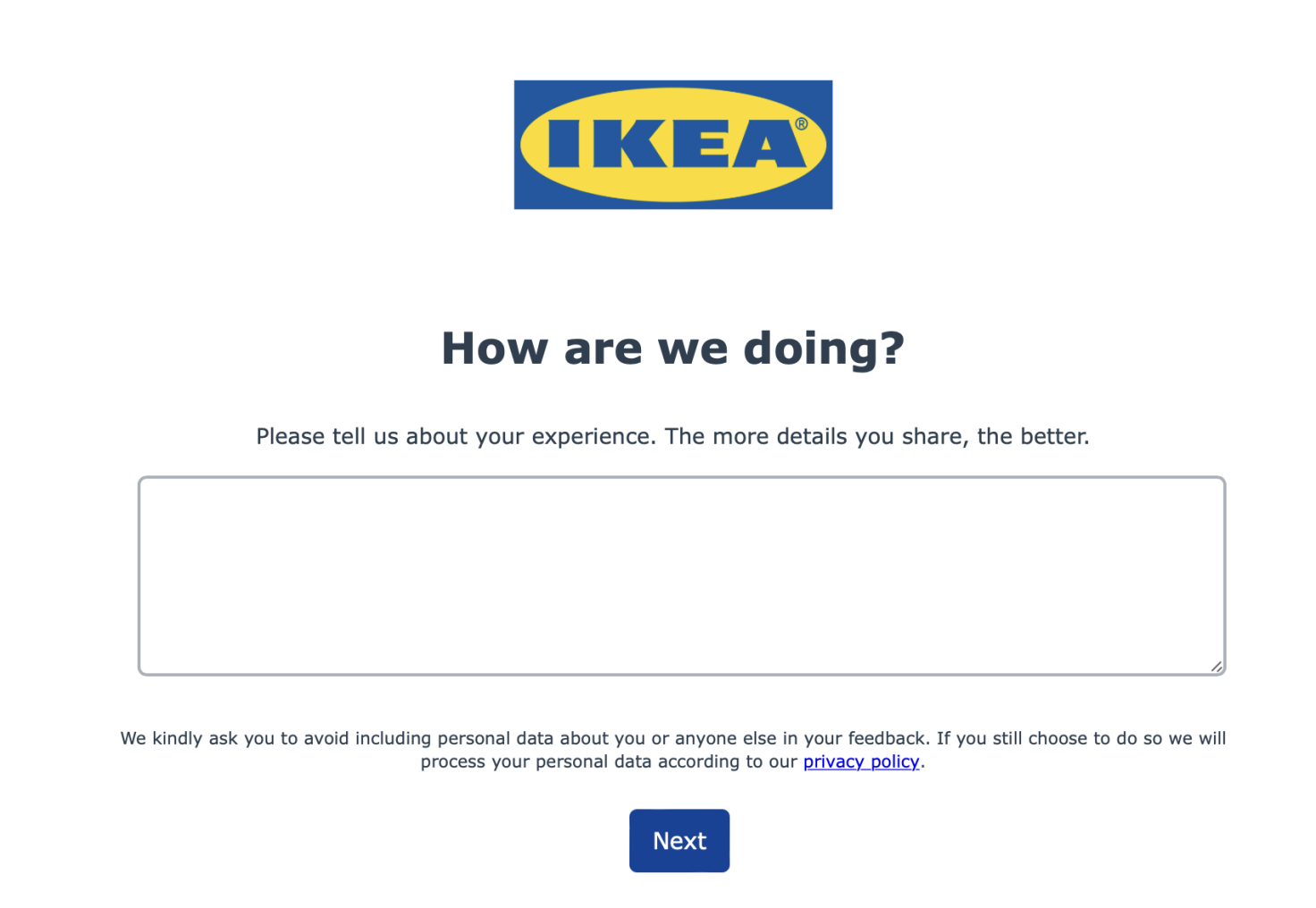
What we like
By using open-text format questions, IKEA can gain a wide range of valuable customer insights.
As part of the instructions, they encourage the participant to share as much as possible. This will help IKEA get more detailed information about their products.
#10 – HelloFresh
HelloFresh is a popular food-kit delivery company. Their target audiences are young families and couples who value convenience and healthy meal options.
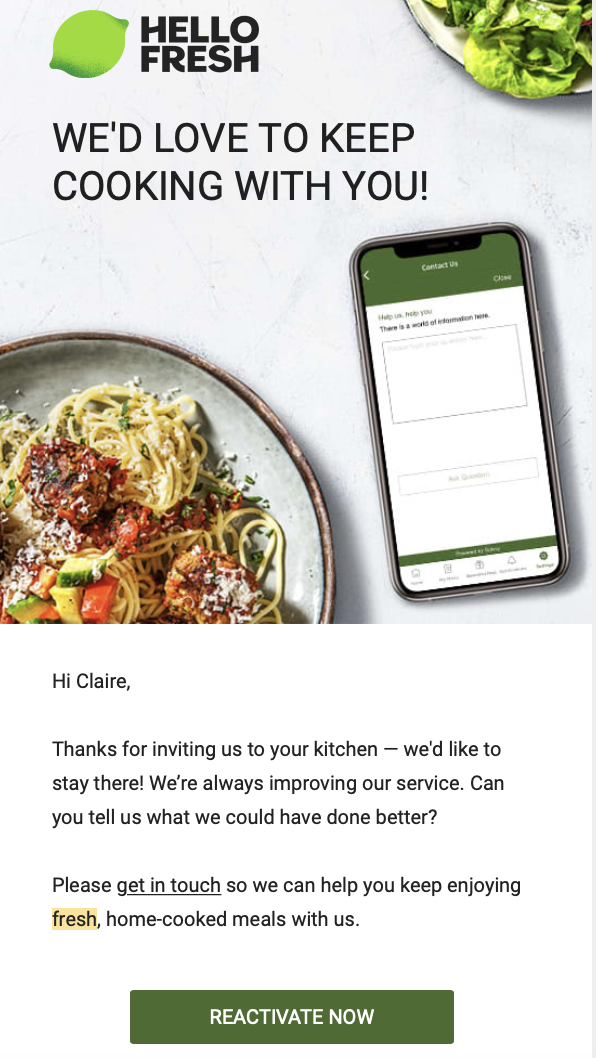
What we like
The invite to share feedback is sent after a customer cancels their subscription (a key time to learn why they decided to leave).
By asking for feedback and offering to reactivate their account, HelloFresh can use their CSAT to encourage customer retention.
#11 – Staples
Staples is the go-to store for office, school, and crafting needs. Their target audiences are office workers, teachers, and parents of school-aged kids.
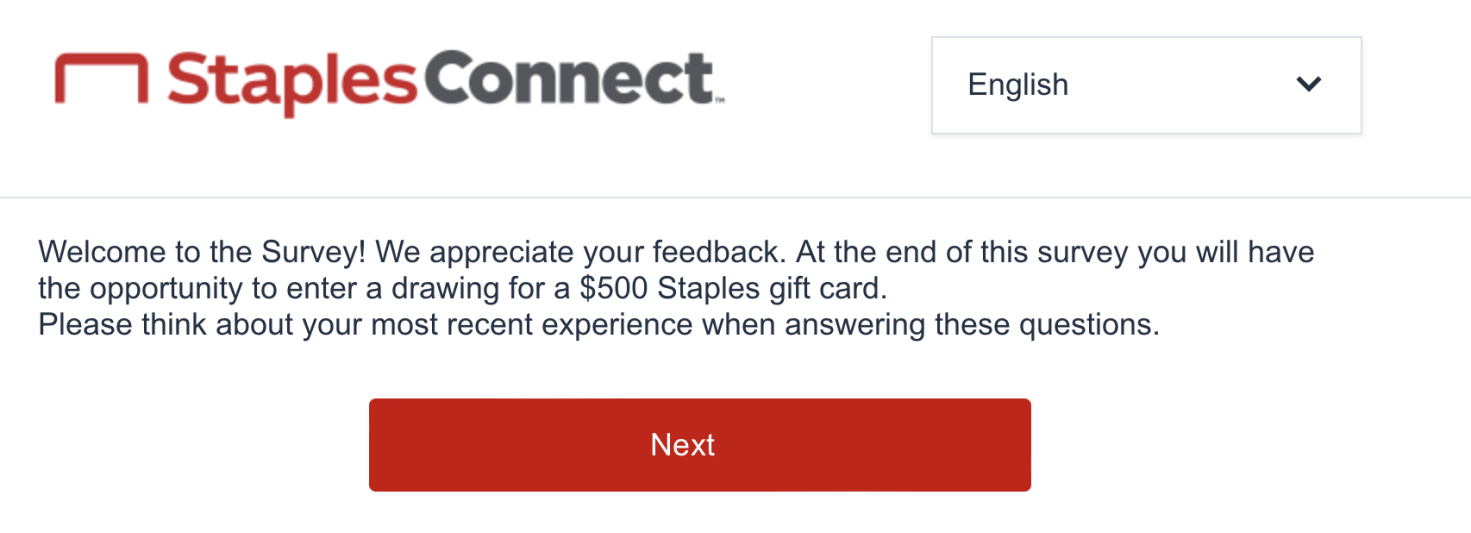
What we like
Staples uses an incentive (chance to win a $500 gift card) to increase survey completion rates.
Using company-specific gifts helps to show appreciation while also building further trust between consumers and the brand.
#12 – Uber
Uber is a ride-sharing competitor to traditional taxis. They have two primary audiences: those who take Uber rides and those who work as Uber drivers.
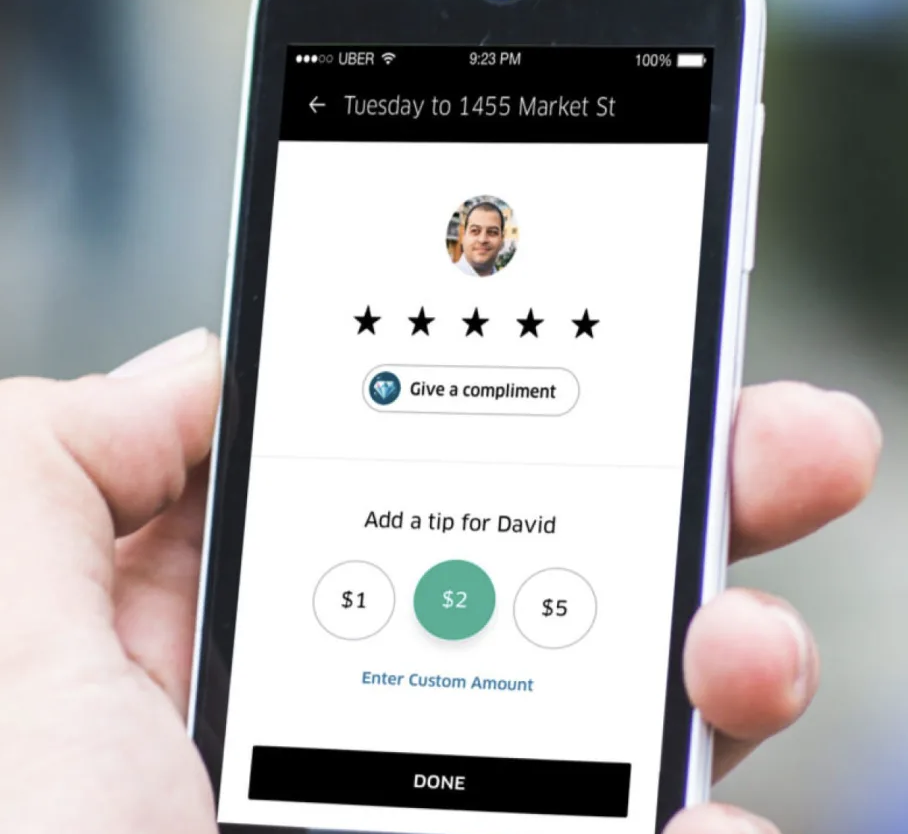
What we like
The “rate your Uber” option pops up right after a ride is completed, which increases the chances of it being filled out.
Uber has integrated feedback into their service (each driver and rider gets a score based on feedback), which propels better experiences for both sides.
#13 – Nike
Nike is an international sporting goods and clothing company. They target high-profile athletes and fitness enthusiasts.
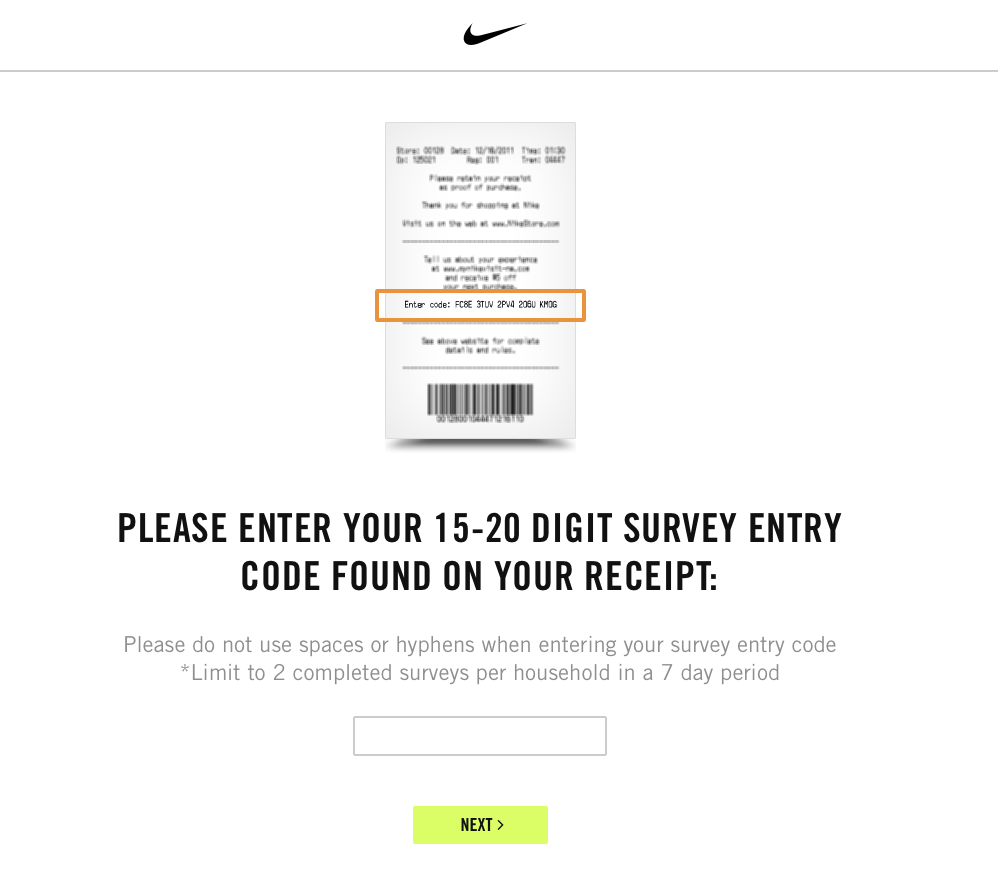
What we like
Nike offers the survey in multiple languages, allowing for a wider reach.
They limit the number of survey entries, which prevents duplicate responses and makes their data more accurate.
#14 – A&W
A&W is a well-known fast-food chain. Their target audiences are families and people looking for convenient, familiar meal options.
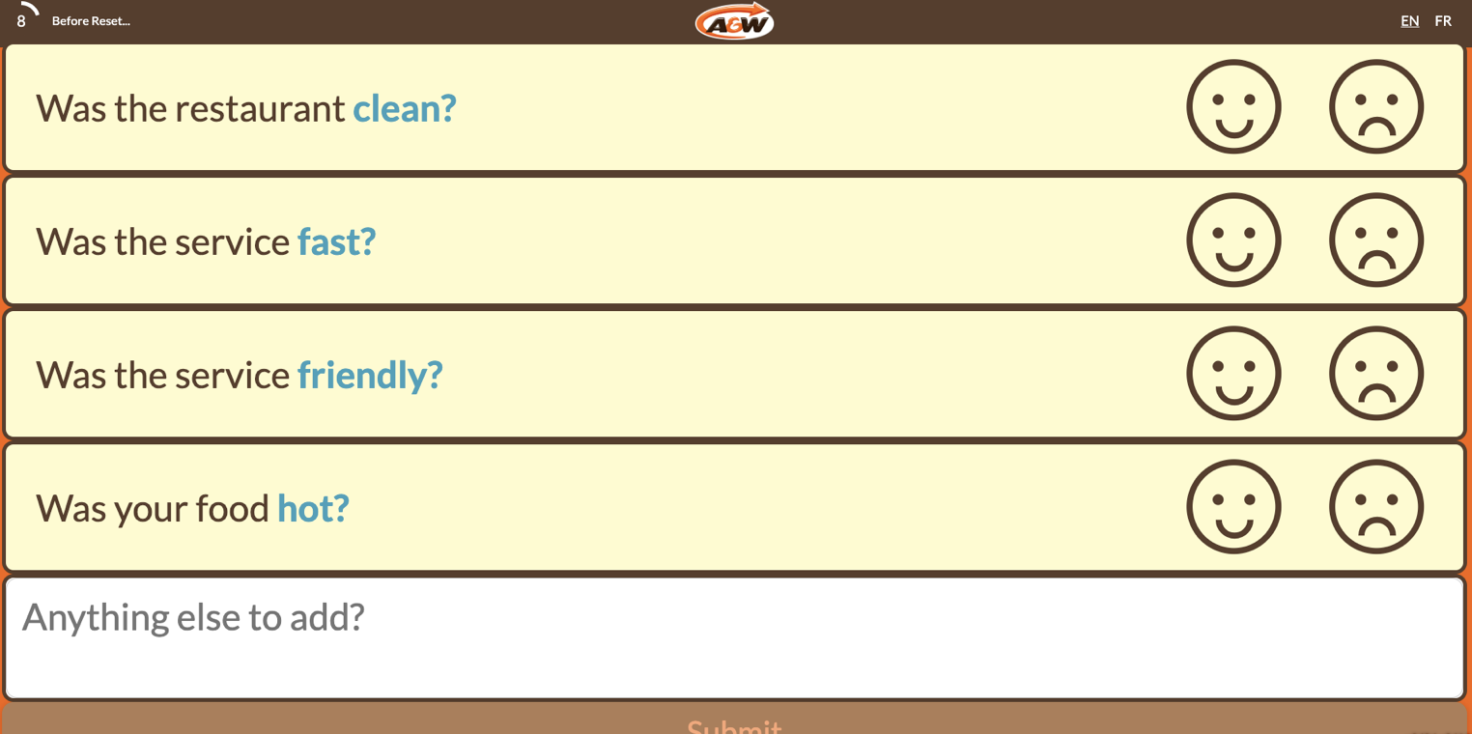
What we like
A&W uses in-person survey stations to collect information from recent customers.
Using images of happy and sad faces instead of numbers makes completing the survey fast, easy, and less confusing.
#15 – Squarespace
Squarespace is a website and email campaign-building platform. It targets novice and professional web developers.

What we like
Sending emails with personalized name callouts helps to drive engagement and survey completion.
Following the rating, customers are offered open-text questions to provide additional feedback.
#16 – Upwork
Upwork is a freelancing platform that helps to connect freelance professionals with clients looking to hire contract workers.

What we like
The wording of Upwork’s survey email is friendly, approachable, and appreciative, which helps build customer trust.
The button to complete the survey is clear, bright, and in company colors, which makes it hard to miss!
#17 – Dropbox
Dropbox offers professional file storage, collaboration, and sharing services. They target companies that value digital convenience and communication.
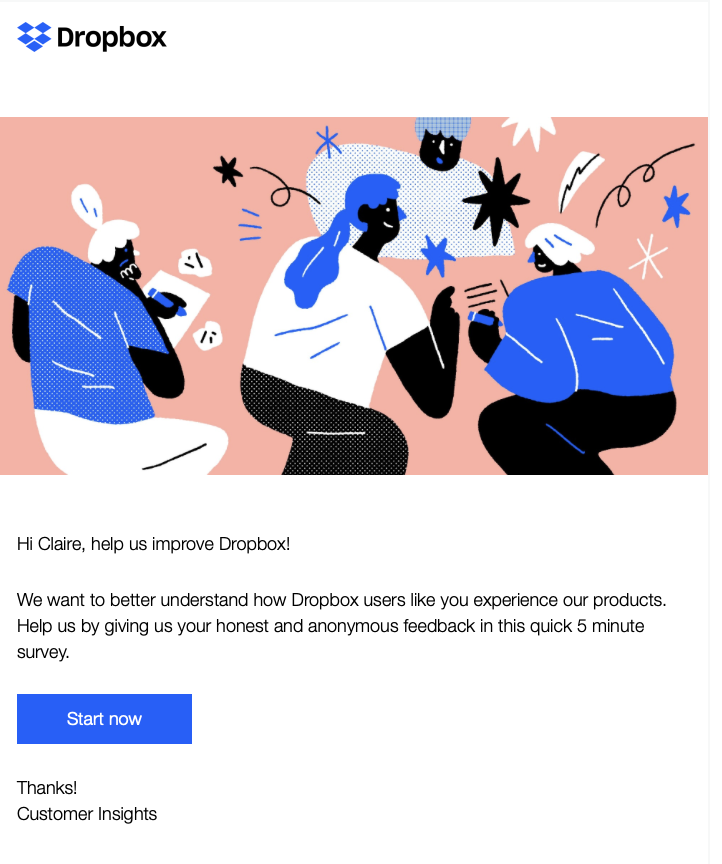
What we like
The email subject line contains an [ACTION REQUIRED] request, which gets customers’ attention.
Adding brand-specific art to the email helps to make the message stand out and the survey more visually appealing.
#18 – Airtable
Airtable is a collaborative software program designed to help businesses build automation. They target start-ups and small businesses looking to improve their workflow.
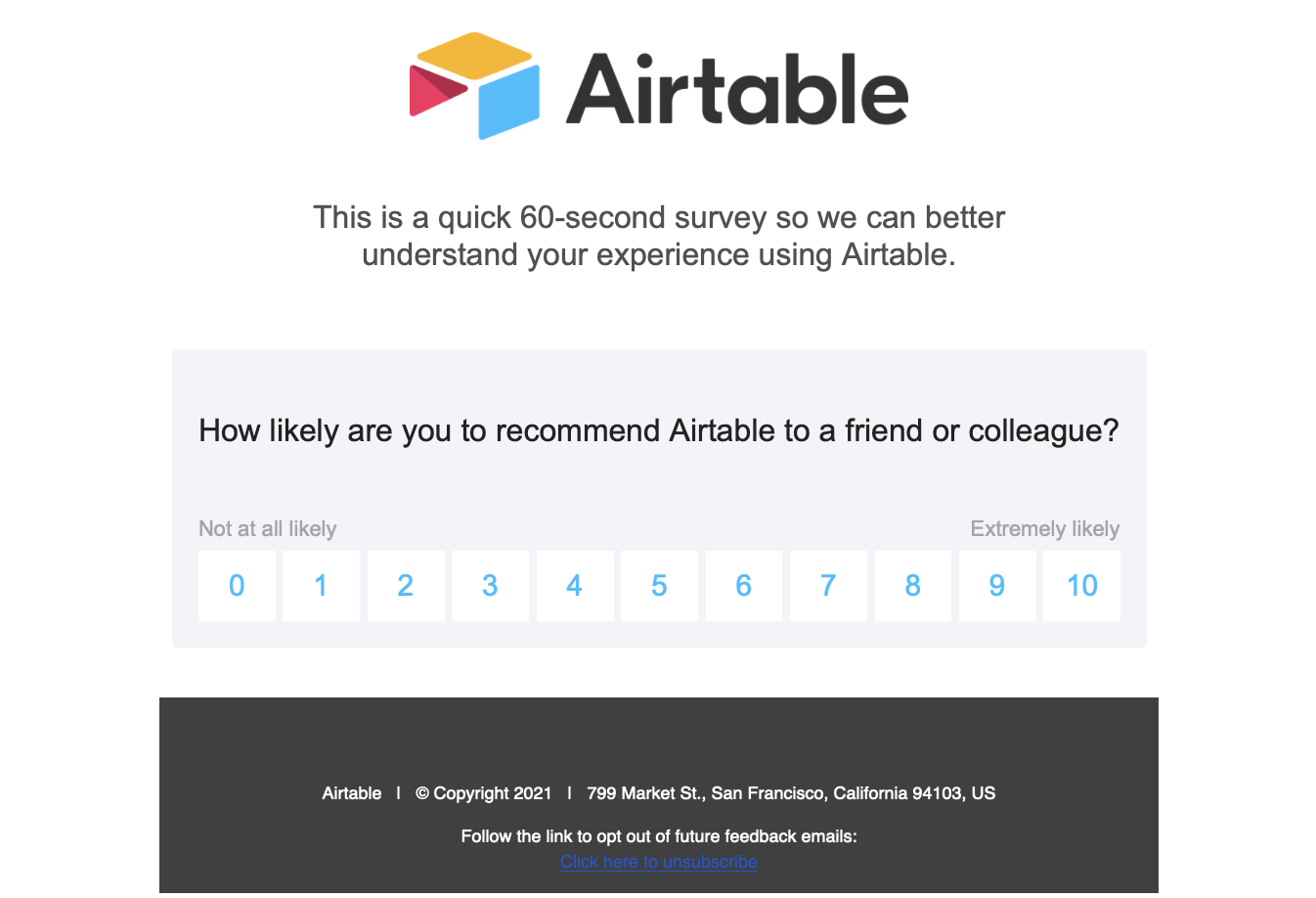
What we like
Airtable states how long the survey will take to complete, which can boost the completion rate because respondents will be prepared for the level of commitment required.
A simple 0–10 scale option makes the questionnaire easy to follow and helps to boost engagement.
#19 – Old Navy
Old Navy is an international casual clothing brand. They create products for men, women, and children.

What we like
The invite to fill out the survey is located at the bottom of a receipt, ensuring that only recent customers are invited to share their experience.
By asking for information about the date, time, and location of the store, Old Navy is collecting valuable demographic info with every survey.
#20 – Air Miles
Air Miles is a group of loyalty programs that help consumers earn travel points with their purchases. They target frequent shoppers and people who value travel discounts.
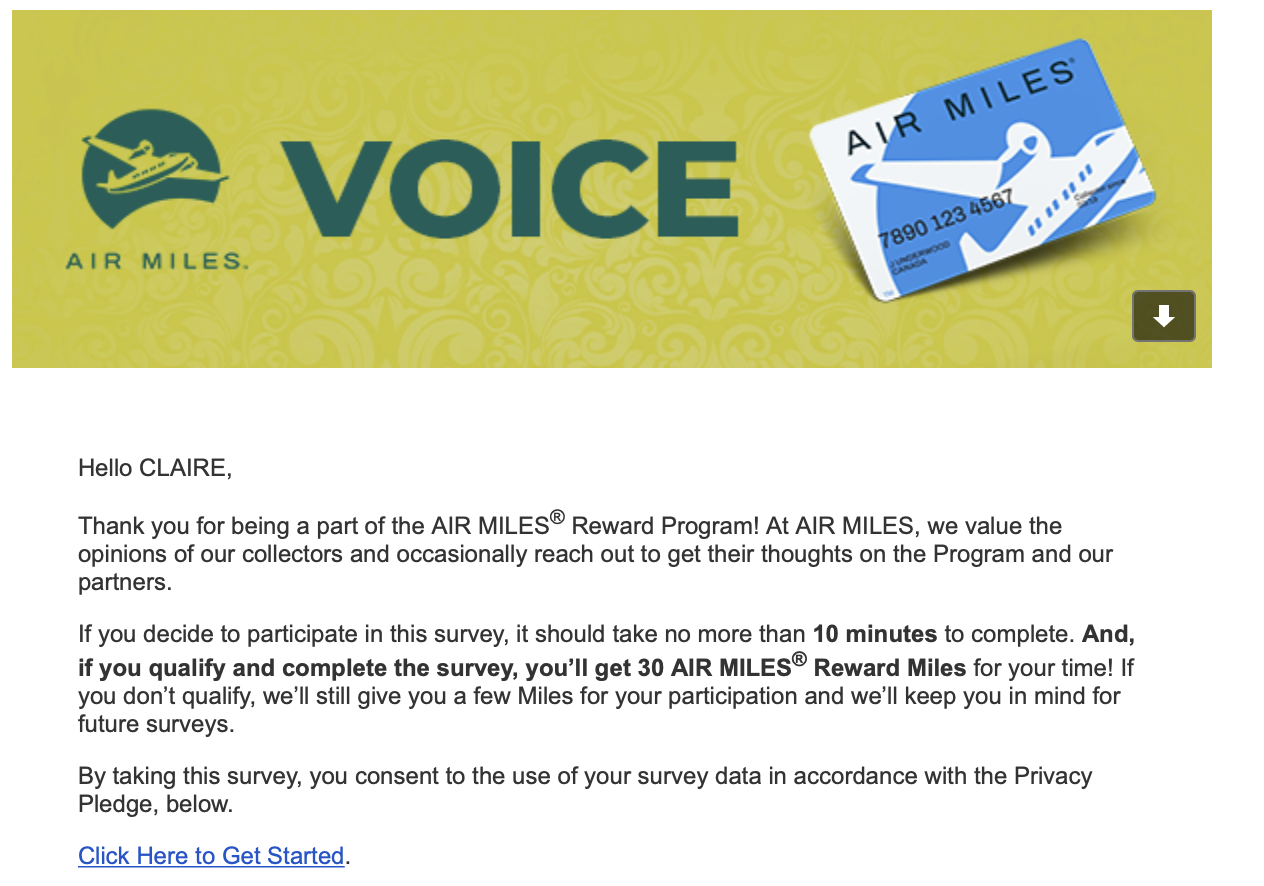
What we like
As part of the email body, Air Miles takes the time to explain and thank participants for their feedback.
By completing the survey, the participant receives a reward of 30 extra Air Miles, which can help to drive engagement.
#21 – Sephora
Sephora is a makeup and skincare company that sells popular cosmetic brands. They target younger people who use beauty products regularly.
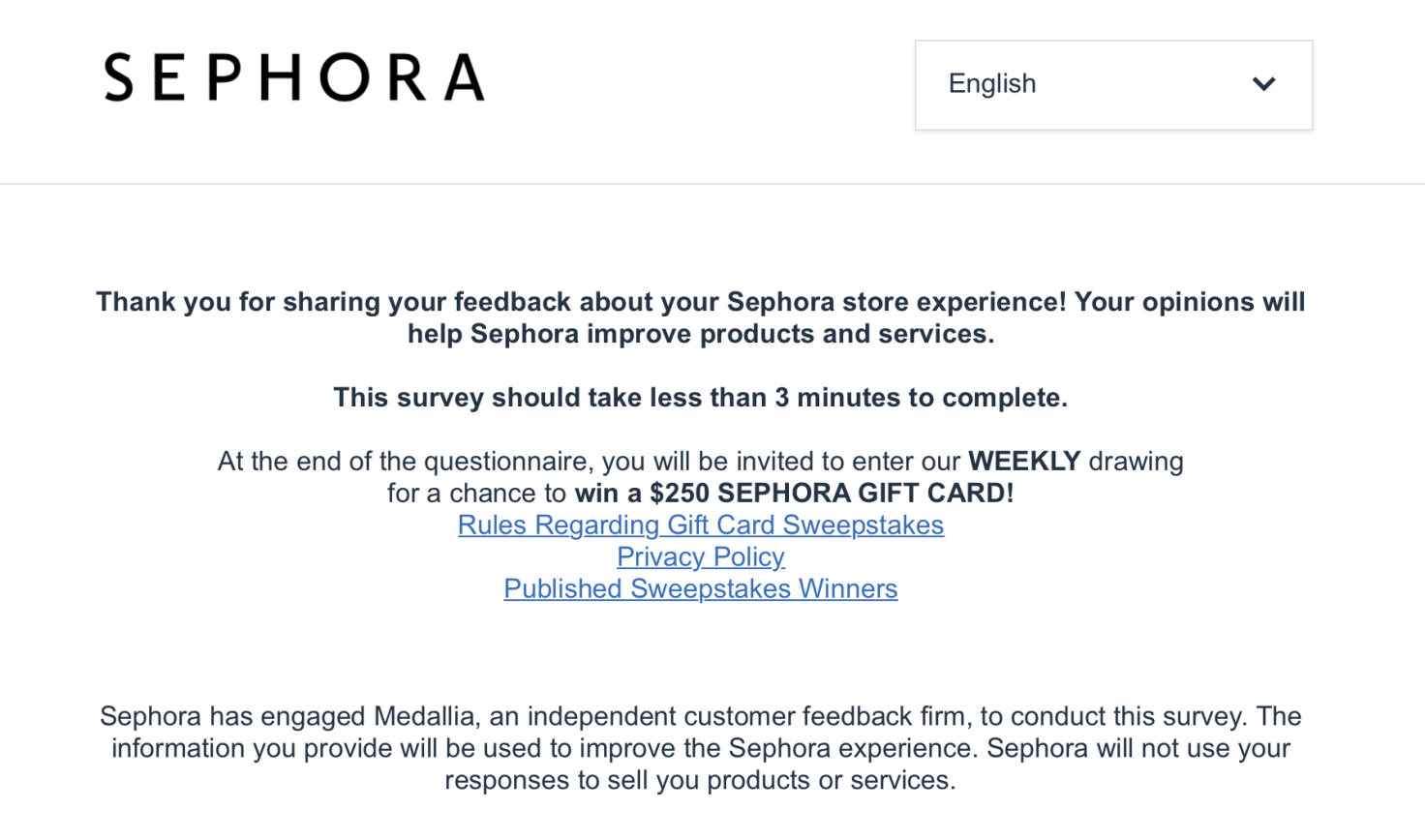
What we like
Sephora states that this feedback will be used to improve their services. This is a great reminder for those filling out the survey that their voice matters.
By filling out the survey, participants get entered into weekly draws for Sephora gift cards, increasing the likelihood of completion.
#22 – Telus
Telus is an international communications company that provides internet, mobile, and cable services. They offer business and residential services.
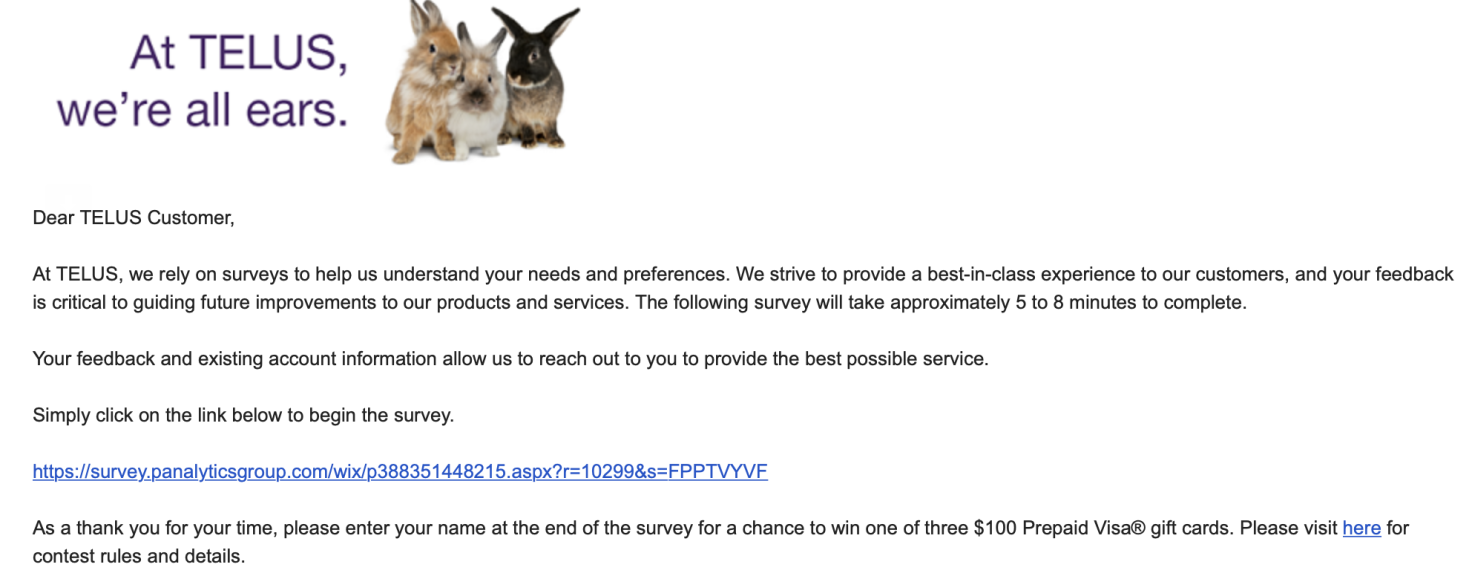
What we like
The email contains clear Telus branding, which helps to create a friendly vibe to their request.
Telus sends multiple email reminders (two to three in total) over a period of time to get feedback. While some may find this overwhelming, it can help boost survey completion rates.
#23 – Qualtrics
Qualtrics is a data-collection company that helps businesses learn more about their target audience (so no surprise here, they have excellent CSAT design).
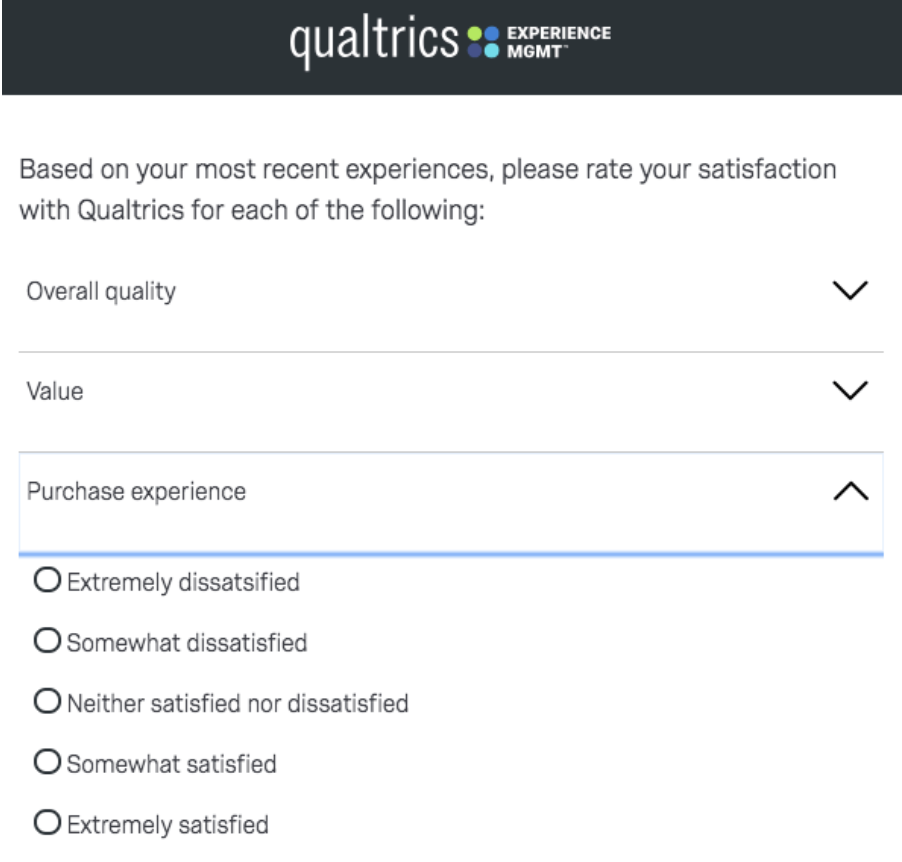
What we like
Using a drop-down menu, each question has a variety of options to choose from, which makes providing feedback quick and easy.
Because this survey only contains a few questions, participants can provide feedback without feeling like they’re wasting their time.
#24 – Home Depot
Home Depot is a trusted brand for everything connected with home renovation. They target professional and amateur handypersons and DIY enthusiasts.

What we like
The clearly labeled sweepstakes program helps to drive engagement with the survey.
Offering company-specific gift cards also helps to build brand awareness and loyalty with returning customers.
Turn customer feedback into action
Listening to your customers is an absolute must for a successful business—especially when adjusting your products or services to better meet their needs.
Using well-designed customer satisfaction surveys is one of the best ways to gain valuable insights into your target audience’s experience with your brand. Once collected, the data and opinions gained from these surveys should act as guiding principles for any changes to improve your offerings.
Should you be using a customer insights hub?
Do you want to discover previous survey findings faster?
Do you share your survey findings with others?
Do you analyze survey data?
Editor’s picks
Last updated: 28 June 2024
Last updated: 16 April 2023
Last updated: 20 March 2024
Last updated: 22 February 2024
Last updated: 13 January 2024
Last updated: 21 December 2023
Last updated: 13 January 2024
Last updated: 26 July 2023
Last updated: 14 February 2024
Last updated: 26 February 2025
Last updated: 18 December 2024
Last updated: 16 February 2025
Last updated: 30 January 2024
Latest articles
Last updated: 26 February 2025
Last updated: 16 February 2025
Last updated: 18 December 2024
Last updated: 28 June 2024
Last updated: 20 March 2024
Last updated: 22 February 2024
Last updated: 14 February 2024
Last updated: 30 January 2024
Last updated: 13 January 2024
Last updated: 13 January 2024
Last updated: 21 December 2023
Last updated: 26 July 2023
Last updated: 16 April 2023